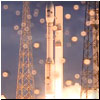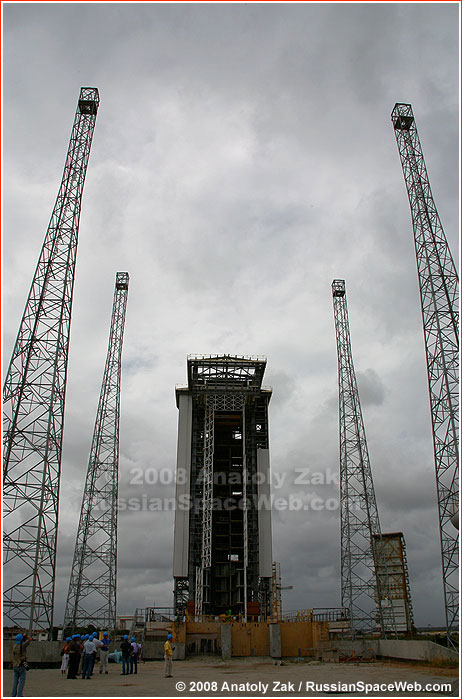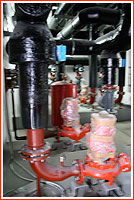The ELA-1 launch complex in Kourou, French Guiana (original) (raw)
Searching for details:
The author of this page will appreciate comments, corrections and imagery related to the subject. Please contact Anatoly Zak.


Something old, something new: The latest addition to the Kourou infrastructure -- a launch pad for the Vega rocket -- used elements of the first launch facility in French Guiana for the all-European booster, Europa-2. Copyright © 2008 Anatoly Zak
The ELA-1 launch complex (from French abbreviation "Ensemble de Lancement Ariane No. 1) was originally intended for the Europa-2 booster. However the very first attempt to fly the vehicle from Kourou in November 1971 ended in failure, after which the program was shut down. The facility was later refurbished for the Ariane program, which was officially under development from July 1973.
Beginning from Christmas Eve of 1979, a total 25 Ariane rockets blasted off from the site, including 11 Ariane-1, five follow-on Ariane-2 and nine Ariane-3 rockets.
Upon the last launch of Ariane-3 on July 12, 1989, the facility was mothballed, while the ELA-2 complex, which was designed to be compatible with a taller new-generation Ariane-4 rocket, took over all space operations in Kourou.
In the meantime, in Kourou workers started dismantling the ELA-1 facilities, ultimately hoping to ship all valuable electronics and building materials back to Europe. On June 20, 1991, ELA-1's signature 70-meter-tall umbilical tower was lowered to the ground. The original service tower of the complex was also demolished. (280)
New life for ELA-1
At the beginning of the 21st century, the ELA-1 launch complex was refurbished yet again, this time for the light-weight Vega booster. As of 2002, the first launch of the Vega was expected in 2006. In the spring of 2008, officials in charge of reconstruction promised Vega's first mission with a dummy satellite in mid-2009.
On February 20, 2009, Arianespace announced that the facility's mobile gantry has performed its initial rollout evaluation. With this initial rollout test complete, the structure was expected to remain in its operational location for several weeks, Arianespace said. This would allow a number of launch pad tasks to be finished, including the completion of work on the umbilical mast, along with the installation of mobile access platforms and fluid supply lines.
| Submit this story to: |  |
Digg it! |  |
del.icio.us |  |
Fark! |  |
Slashdot |
|---|
Page author: Anatoly Zak; Last update:February 13, 2012
Page editor: Alain Chabot; Last edit: May 23, 2008
All rights reserved
IMAGE ARCHIVE
The ELA-1 facility gets a makeover to accommodate the next-generation Vega rocket. Click to enlarge. Copyright © 2008 Anatoly Zak
The access ramp to the ELA-1 launch pad. Click to enlarge. Copyright © 2008 Anatoly Zak
The access ramp to the ELA-1 launch pad. Click to enlarge. Copyright © 2008 Anatoly Zak
Despite its monumental size, the service tower rests on wheels, which enable it to roll away to safety shortly before launch. Click to enlarge. Copyright © 2008 Anatoly Zak
The only thing missing is the rocket. A side view of the Vega launch pad with a flame trench in the foreground. Click to enlarge. Copyright © 2008 Anatoly Zak

Typically for a space launch complex, the underbelly of the ELA-1 pad hides extensive hardware and plumbing. Copyright © 2008 Anatoly Zak
)
)
)
)
)